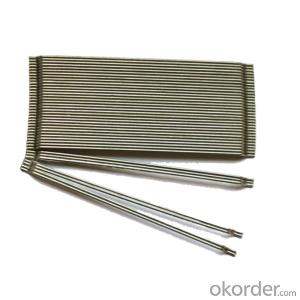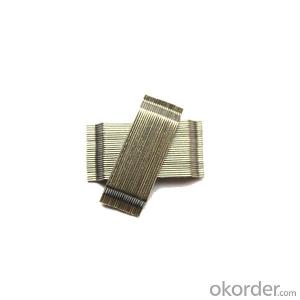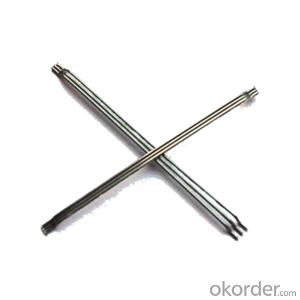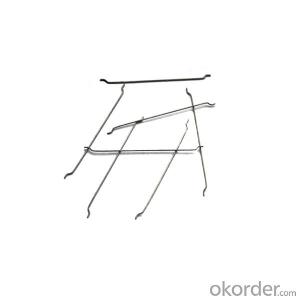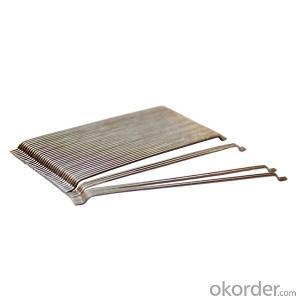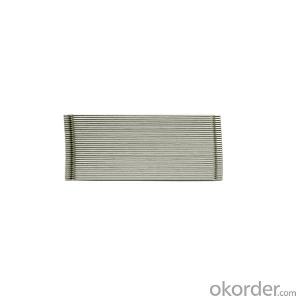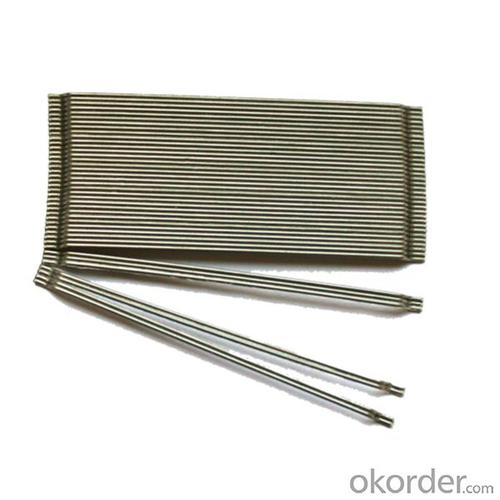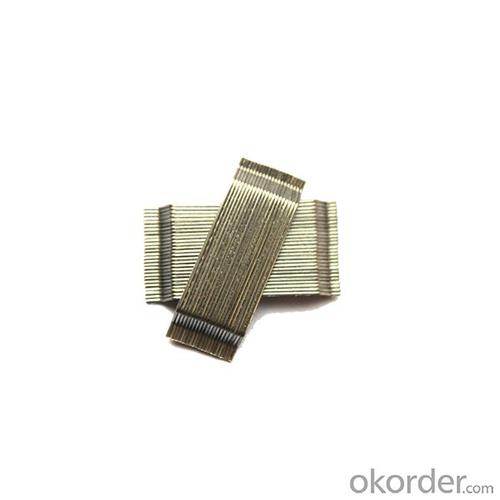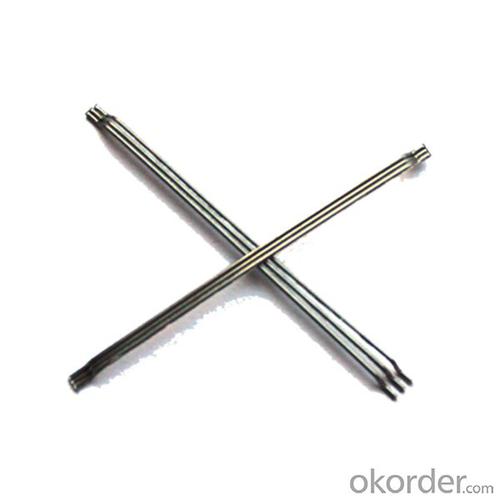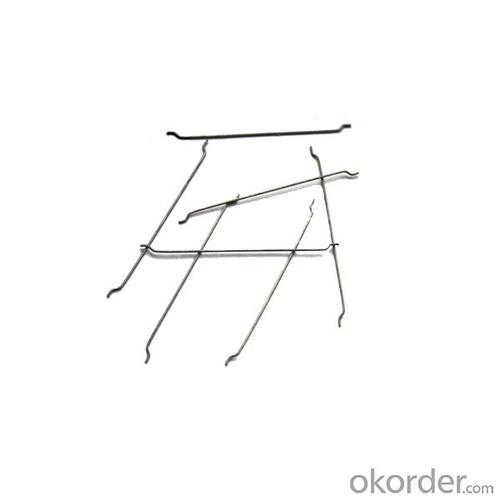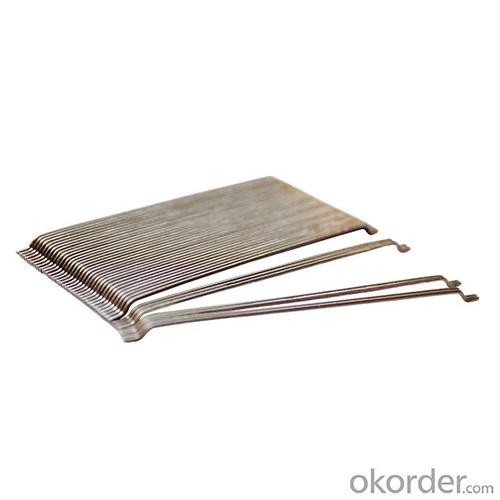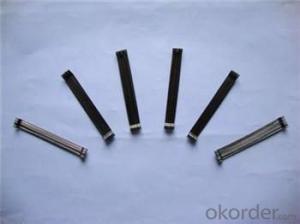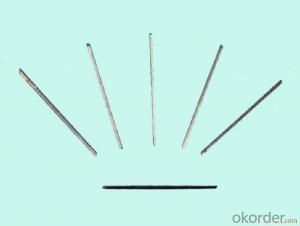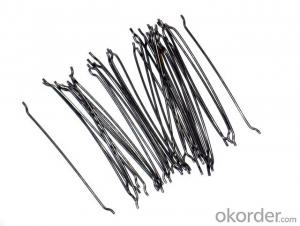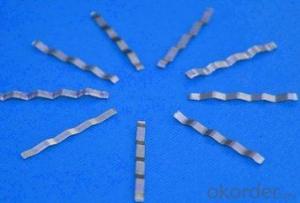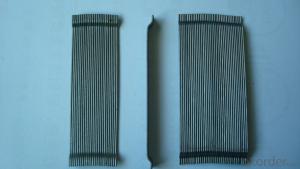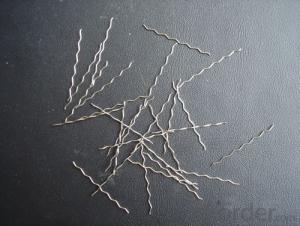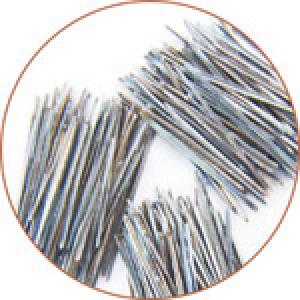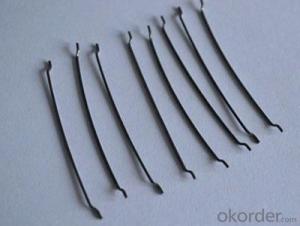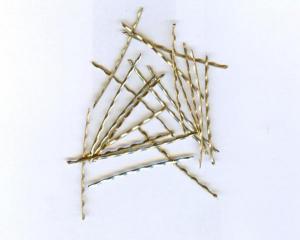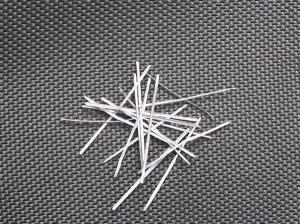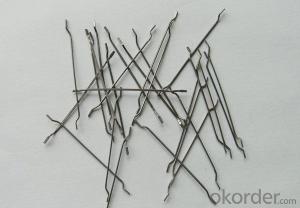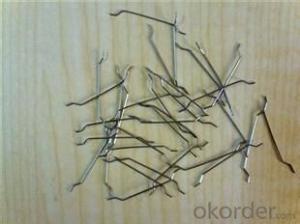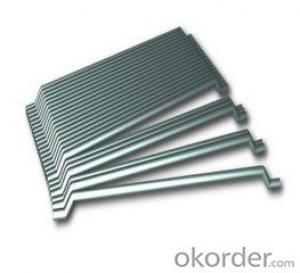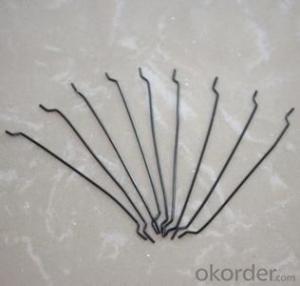Melt Extract Stainless Steel Fiber >1200MPA ASTM A820M-11 Type 1
- Loading Port:
- Tianjin
- Payment Terms:
- TT OR LC
- Min Order Qty:
- 20 m.t.
- Supply Capability:
- 600 m.t./month
OKorder Service Pledge
Quality Product, Order Online Tracking, Timely Delivery
OKorder Financial Service
Credit Rating, Credit Services, Credit Purchasing
You Might Also Like
Quick Details
Place of Origin: Tianjin, China (Mainland)
- Model Number: 0.75
Material: Steel
Production Process: Cold drawn
Fiber Lengh: 60
Type: 1
Compressive Strength: >1200MPa
Aspect ratio: 80
Standard: ASTM A820M-11
Section Shape: Circular
Application: Concrete Reinforcement
- Product Uses: Industrial flooring
Packaging & Delivery
| Packaging Details: | 20 kg/Bag,50 bags/Pallet or 1,000kg/ Bulk Bag |
|---|---|
| Delivery Detail: | 1 Month |
Product Description
| Diameter | 0.75 | mm | 0.03 | in |
| Length | 60.00 | mm | 2.35 | in |
| Aspect Ratio | 80 | |||
| Tensile strength | 1200 MPa | |||
| Type | Cold drawn Steel Fiber | |||
| End | Hooked-end Steel Fiber | |||
| Glued/Loose | Glued Steel Fiber | |||
| Bending Angle | 45°(min.30°) | |||
| Usage & Performance | Floor:Trafficked areas and Industrial floors | |||
| Shotcrete :Slope stabilization and Final lining | ||||
| Precast concrete:Pipe and Railway sleepers | ||||
| Packing | Standard Export Pallet Packing | Bag Packing | 20 kg/Bag,50 bags/Pallet | |
| Bulk Packing | 1,000kg/ Bulk Bag | |||
| Loading Quantity | 20’GP | 20-25 Tonne/Tonnes | ||
| 40’GP | 25-27 Tonne/Tonnes | |||
| 40’HQ | 25-27 Tonne/Tonnes | |||
| MOQ | 1 kg for trial order | |||
| Supply Ability | 10,000 Tonne/Tonnes per Year | |||
| Payment Terms | T/T or L/C at sight | |||
| Delivery Time | Within 15 days after receiving deposit or original L/C at sight | |||
| Certification | ISO9001:2000, CE, | |||
| Product | Diameter | Length mm/in | Aspect Ratio | Type | Packing |
| G-6030 | 0.5 mm (0.0197 in) | 30 mm (1.1811 in) | 60 | Glued | 20 kg/Bag, or 1,000kg/ Bulk Bag |
| G-6535 | 0.55 mm (0.0217 in) | 35 mm (1.3780 in) | 65 | Glued | 20 kg/Bag, or 1,000kg/ Bulk Bag |
| G-6035 | 0.6 mm (0.0236 in) | 35 mm (1.3780 in) | 60 | Glued | 20 kg/Bag, or 1,000kg/ Bulk Bag |
| G-8060 | 0.75 mm (0.0295 in) | 60 mm (2.3622 in) | 80 | Glued | 20 kg/Bag, 50 bags/Pallet |
| G-6060 | 0.9 mm (0.0354 in) | 60 mm (2.3622 in) | 60 | Glued | 20 kg/Bag, 50 bags/Pallet |
| G-6030 | 0.5 mm (0.0197 in) | 30 mm (1.1811 in) | 60 | Loose | 20 kg/Bag, or 1,000kg/ Bulk Bag |
| G-6535 | 0.55 mm (0.0217 in) | 35 mm (1.3780 in) | 65 | Loose | 20 kg/Bag, or 1,000kg/ Bulk Bag |
| G-6035 | 0.6 mm (0.0236 in) | 35 mm (1.3780 in) | 60 | Loose | 20 kg/Bag, or 1,000kg/ Bulk Bag |
| G-8060 | 0.75 mm (0.0295 in) | 60 mm (2.3622 in) | 80 | Loose | 20 kg/Bag, 50 bags/Pallet |
| G-6060 | 0.9 mm (0.0354 in) | 60 mm (2.3622 in) | 60 | Loose | 20 kg/Bag, 50 bags/Pallet |
- Q: How does melt extract stainless steel fiber contribute to the crack control of concrete?
- The crack control of concrete is greatly enhanced by the incorporation of melt extract stainless steel fiber. These fibers are included in the concrete mix to reinforce and enhance the overall strength and durability of the structure. When concrete experiences shrinkage due to drying or temperature changes, it has a tendency to crack. However, the inclusion of melt extract stainless steel fibers helps to minimize the width and spread of these cracks. The distinctive properties of stainless steel fibers, such as their high tensile strength, corrosion resistance, and excellent bonding with concrete, contribute to crack control. By forming a three-dimensional network within the concrete matrix, these fibers effectively bridge the cracks and restrict their growth. Furthermore, melt extract stainless steel fibers also enhance the ductility and toughness of concrete as a whole. This means that even if cracks do occur, they are less likely to propagate and cause significant damage to the structure. By acting as reinforcement, these fibers enhance the concrete's ability to withstand the forces that cause cracking. In addition to crack control, the inclusion of melt extract stainless steel fibers also improves the overall performance of concrete by providing better resistance against impact, fatigue, and abrasion. This makes them particularly advantageous in high-stress applications such as industrial flooring, tunnel linings, and precast concrete elements. In summary, the addition of melt extract stainless steel fibers to concrete significantly contributes to crack control by reducing crack width, preventing crack propagation, and enhancing the overall strength and durability of the structure.
- Q: Can melt extract stainless steel fiber be used in industrial flooring applications for shotcrete?
- Yes, melt extract stainless steel fiber can be used in industrial flooring applications for shotcrete.
- Q: What is the effect of melt extract stainless steel fiber on the plastic settlement of shotcrete?
- The melt extract stainless steel fiber has a positive effect on the plastic settlement of shotcrete. It helps to improve the overall stability and reduce the plastic shrinkage cracking by reinforcing the concrete matrix. The fibers act as a reinforcement, enhancing the tensile strength and reducing the settlement and cracking of the shotcrete during the plastic phase.
- Q: Can melt extract stainless steel fiber be used in water retaining structures?
- Yes, melt extract stainless steel fiber can be used in water retaining structures. This type of fiber is highly corrosion-resistant and can withstand exposure to water without compromising its performance. It can be incorporated into concrete or other materials used in water retaining structures to enhance their strength, durability, and crack resistance.
- Q: Steel fiber prices? (recent price)
- The main varieties of steel fiber are steel plate shearing type, steel wire cutting type and Steel Ingot Milling type. At present, shear steel fiber is the main application of steel fiber reinforced concrete in china.
- Q: Is melt extract stainless steel fiber compatible with various types of cement?
- Yes, melt extract stainless steel fiber is compatible with various types of cement.
- Q: What are the advantages of using melt extract stainless steel fiber?
- The advantages of using melt extract stainless steel fiber include increased strength and durability, improved resistance to corrosion and high temperatures, enhanced crack resistance and impact resistance, and the ability to reinforce and stabilize concrete and other materials. Additionally, stainless steel fiber offers excellent electrical conductivity and electromagnetic shielding properties, making it suitable for various industrial applications.
- Q: How does melt extract stainless steel fiber improve the bond strength of shotcrete?
- Melt extract stainless steel fiber improves the bond strength of shotcrete in several ways. Firstly, the steel fibers act as reinforcement within the shotcrete mix, providing additional strength to the material. When the shotcrete is applied, the fibers are evenly distributed throughout the mix, creating a network of reinforcement that enhances the overall bond strength. Secondly, the stainless steel fibers have a high aspect ratio, meaning they are long and thin. This characteristic allows them to effectively bridge any cracks or voids that may form within the shotcrete. By bridging these gaps, the fibers prevent the propagation of cracks and enhance the overall cohesion of the material, thus increasing the bond strength. Furthermore, the stainless steel fibers also improve the durability of shotcrete. Due to their corrosion resistance properties, they can withstand harsh environments and prevent degradation over time. This durability ensures that the bond strength of the shotcrete remains intact for an extended period, even in challenging conditions. Overall, melt extract stainless steel fiber enhances the bond strength of shotcrete by providing reinforcement, bridging cracks, and increasing durability. This makes shotcrete more reliable and effective in various construction applications, such as tunnel linings, retaining walls, and structural repairs.
- Q: Can melt extract stainless steel fiber be used in architectural precast concrete applications?
- Architectural precast concrete applications can benefit from the utilization of melt extract stainless steel fiber. It is a common practice to incorporate stainless steel fibers into concrete mixes in order to enhance the overall strength, durability, and performance of the final product. By utilizing stainless steel fibers in architectural precast concrete, the structural integrity of the panels can be improved, making them more resistant to cracking, impact, and other types of damage. Moreover, the implementation of stainless steel fibers in architectural precast concrete can enhance the visual appeal of the panels by reducing surface defects and improving the overall finish. These fibers also offer additional reinforcement to the concrete, allowing for thinner and lighter panels without compromising strength. Melt extract stainless steel fibers are particularly well-suited for architectural precast concrete applications due to their high tensile strength, corrosion resistance, and ability to withstand extreme temperatures. These fibers are manufactured using a specialized process that guarantees consistent quality and performance. In conclusion, incorporating melt extract stainless steel fiber in architectural precast concrete applications is highly recommended as it can significantly enhance the durability, strength, and aesthetics of the panels.
- Q: Can melt extract stainless steel fiber be used in parking garage structures?
- Yes, melt extract stainless steel fiber can be used in parking garage structures. This type of fiber is known for its high strength and durability, making it suitable for reinforcing concrete in parking garage constructions. The stainless steel material is resistant to corrosion and can withstand heavy loads and harsh environmental conditions, making it an ideal choice for enhancing the structural integrity and longevity of parking garage structures.
Send your message to us
Melt Extract Stainless Steel Fiber >1200MPA ASTM A820M-11 Type 1
- Loading Port:
- Tianjin
- Payment Terms:
- TT OR LC
- Min Order Qty:
- 20 m.t.
- Supply Capability:
- 600 m.t./month
OKorder Service Pledge
Quality Product, Order Online Tracking, Timely Delivery
OKorder Financial Service
Credit Rating, Credit Services, Credit Purchasing
Similar products
Hot products
Hot Searches
Related keywords
